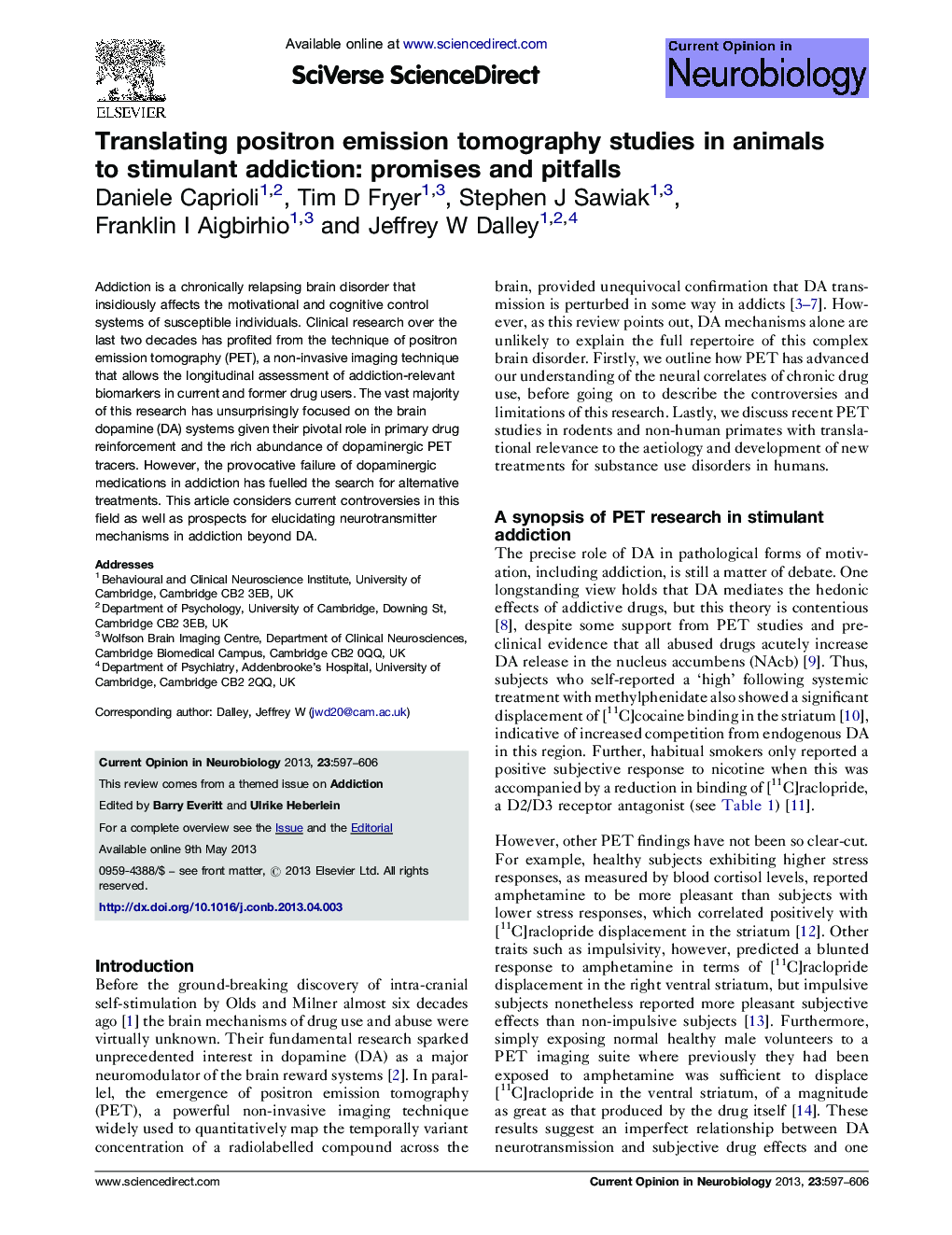| Article ID | Journal | Published Year | Pages | File Type |
|---|---|---|---|---|
| 6267115 | Current Opinion in Neurobiology | 2013 | 10 Pages |
â¢We survey the key biomarkers of stimulant addiction in humans.â¢We discuss the latest developments in pre-clinical brain imaging in addiction.â¢We highlight future directions of positron emission tomography in addiction research.
Addiction is a chronically relapsing brain disorder that insidiously affects the motivational and cognitive control systems of susceptible individuals. Clinical research over the last two decades has profited from the technique of positron emission tomography (PET), a non-invasive imaging technique that allows the longitudinal assessment of addiction-relevant biomarkers in current and former drug users. The vast majority of this research has unsurprisingly focused on the brain dopamine (DA) systems given their pivotal role in primary drug reinforcement and the rich abundance of dopaminergic PET tracers. However, the provocative failure of dopaminergic medications in addiction has fuelled the search for alternative treatments. This article considers current controversies in this field as well as prospects for elucidating neurotransmitter mechanisms in addiction beyond DA.
